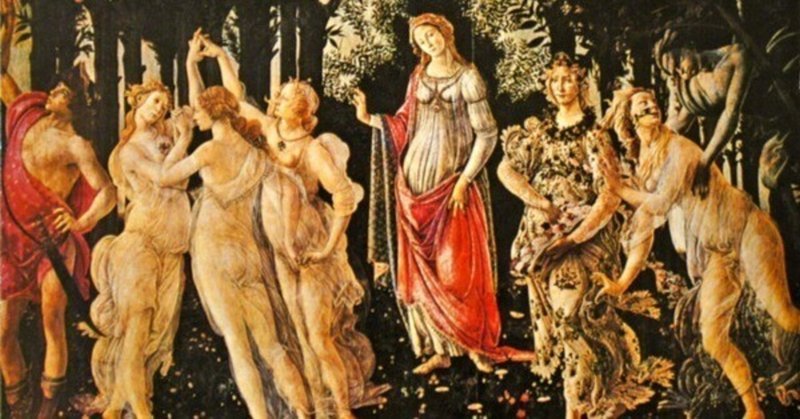
ヴィヴァルディの協奏曲集「和声と創意の試み」~四季(春夏秋冬)
ヴィヴァルディの協奏曲集「和声と創意の試み」作品8は、バロック音楽の傑作として広く知られています。その中でも特に有名なのが、第1番から第4番までの「四季」です。この曲は、それぞれ春夏秋冬を表現した協奏曲で、ヴァイオリンと弦楽合奏が織りなす美しい旋律と効果的な音色が魅力です。しかし、この曲にはもともと詩が付けられており、それに沿って音楽が作られています。例えば、春の第1楽章では、鳥のさえずりや雷鳴、牧歌的な情景などが描かれています。このように、ヴィヴァルディは自然や人間の感情を音楽で具体的に表現しようとしたのです。
この曲の歴史について少し説明しましょう。「四季」は、1723年から1725年にかけて作曲されました。当時、ヴィヴァルディはヴェネツィアの孤児院で音楽教師をしていました。彼は、自分が教える女子生徒たちのために、多くの協奏曲や宗教曲を作曲しました。「四季」もその一つです。この曲は、当時流行していた「プログラム音楽」と呼ばれるジャンルに属します。プログラム音楽とは、ある物語や情景を音楽で表現することです。「四季」では、それぞれの協奏曲に詩が付けられており、その詩に基づいて音楽が作られています。詩は、おそらくヴィヴァルディ自身が書いたものだと考えられています。
「四季」は、当時から人気がありました。特にフランスでは、「和声と創意の試み」全体が出版されました。しかし、18世紀後半から19世紀にかけて、ヴィヴァルディの音楽は忘れられていきました。20世紀初頭になって、彼の作品が再発見されるようになりました。「四季」もその中で注目されるようになりました。特に1939年にイタリアで発見された原典譜が大きな影響を与えました。この原典譜は、「四季」だけでなく、「和声と創意の試み」全体を含む12曲の協奏曲集でした。この原典譜をもとに、「四季」の正確な演奏法や解釈が研究されるようになりました。
この曲を古楽器で演奏することで、ヴィヴァルディの意図した音色やニュアンスをより忠実に再現することができます。その先駆者として、ニコラウス・アーノンクールとウィーン・コンツェントゥス・ムジクスによる録音があります。この録音は、1976年から1977年にかけてウィーンで行われ、2022年にデジタル発売されました。アーノンクールは、当時の楽器や奏法を研究し、ヴィヴァルディの音楽に新しい解釈と表現力を与えました。彼の妻であるアリス・アーノンクールは、ヴァイオリン独奏を担当し、豊かな表情と技巧で聴衆を魅了しました。この録音は、「四季」だけでなく、「和声と創意の試み」の第5番「海の嵐」と第6番「喜び」も収録しています。
この録音は、ヴィヴァルディの「四季」の中でも特に評価の高いもので、多くの古楽ファンに愛されています。しかし、この録音はまた、論争も巻き起こしました。なぜなら、アーノンクールは、テキストに忠実すぎるあまり、音楽をあえて歪めたり乱暴に扱ったりすることもあったからです。例えば、夏の第3楽章では、暑さに苦しむ農民たちを表すために、弦楽器を強く引っ張ったり擦ったりして不協和音を出したりします。また、冬の第2楽章では、雨や雪が降る様子を表すために、ピッチカートやトレモロなどの特殊奏法を多用します。これらの演奏は、当時の聴衆に衝撃を与えたと言われています。
このように、アーノンクールは、「四季」を自分なりに再解釈し、独自の骨っぽい響きの世界を作り上げました。この録音は、古楽器演奏によるヴィヴァルディ「四季」の原点と言えるでしょう。しかし、この録音が、ヴィヴァルディの曲の真の姿を伝える唯一の演奏だと断定されては困ります。この録音は、あくまでアーノンクール独自の解釈であり、他の古楽器演奏家たちも、それぞれに異なる解釈や表現を持っています。例えば、オイローバ・ガランテやイル・ジャルディーノ・アルモニコなどの若いイタリアの古楽器演奏家たちは、アーノンクールよりも洗練された音色やテンポで、「四季」を演奏しています。また、ヴィヴァルディ自身も、同じ曲を異なる楽器や編成で演奏したり、改作したりしていました。つまり、「四季」には、一つとして同じ演奏がないのです。
ヴィヴァルディの「四季」は、古楽器演奏によって、その魅力をさらに引き出すことができます。しかし、古楽器演奏には、様々な解釈や表現があります。その中から、自分の好みや感性に合ったものを選ぶことが大切です。そして、それぞれの演奏に耳を傾けることで、「四季」の豊かな音楽的世界を楽しむことができます。
Vivaldi's concerto collection ``An Experiment in Harmony and Invention,'' Op. 8, is widely known as a masterpiece of Baroque music. Among them, the most famous is the "Four Seasons" from No. 1 to No. 4. This piece is a concerto that expresses spring, summer, fall, and winter, and the beautiful melody and effective tone woven by the violin and string ensemble are attractive. However, this song originally had a poem attached to it, and music was created along with it. For example, the first movement of Spring depicts birds chirping, thunder, and pastoral scenes. In this way, Vivaldi tried to concretely express nature and human emotions through music.
Let's explain a little bit about the history of this song. "The Four Seasons" was composed between 1723 and 1725. At the time, Vivaldi was working as a music teacher at an orphanage in Venice. He composed many concertos and religious pieces for the girls he taught. "Four Seasons" is one of them. This song belongs to a genre called "program music" that was popular at the time. Program music is the expression of a story or scene through music. In "The Four Seasons," each concerto has a poem attached to it, and the music is based on the poem. The poem is thought to have probably been written by Vivaldi himself.
"Four Seasons" has been popular since then. Particularly in France, the entire ``Experiment with Harmony and Ingenuity'' was published. However, from the late 18th century to the 19th century, Vivaldi's music was forgotten. His work began to be rediscovered in the early 20th century. ``Four Seasons'' has also started to attract attention. In particular, the original sheet music discovered in Italy in 1939 had a great influence. This original score was a collection of 12 concertos, including not only ``The Four Seasons,'' but also the entire ``Attempts in Harmony and Creativity.'' Based on this original score, research has begun into the correct performance and interpretation of Shiki.
By playing this piece on period instruments, it is possible to more faithfully reproduce the tone and nuances that Vivaldi intended. Its forerunners include recordings by Nikolaus Harnoncourt and the Vienna Concentus Musicus. This recording was made in Vienna between 1976 and 1977 and will be released digitally in 2022. Harnoncourt studied the instruments and playing methods of the time, giving Vivaldi's music new interpretations and expressive power. His wife, Alice Harnoncourt, played solo violin and captivated the audience with her rich expressions and technique. This recording includes not only "Four Seasons" but also No. 5 "Sea Storm" and No. 6 "Joy" from "Attempts in Harmony and Creativity."
This recording is one of the most highly regarded among Vivaldi's ``The Four Seasons,'' and is loved by many early music fans. However, the recording also sparked controversy. This is because Harnoncourt was so faithful to the text that he sometimes purposefully distorted and manipulated the music. For example, in the third movement of Summer, stringed instruments are pulled and scraped to create a dissonant sound to represent the peasants suffering from the heat. Additionally, in the second winter movement, special playing techniques such as pizzicato and tremolo are often used to represent falling rain and snow. These performances are said to have shocked audiences at the time.
In this way, Harnoncourt reinterpreted "The Four Seasons" in his own way, creating his own unique, gritty-sounding world. This recording can be said to be the origin of Vivaldi's "Four Seasons" performed on period instruments. However, it would be troublesome to conclude that this recording is the only performance that conveys the true nature of Vivaldi's music. This recording is Harnoncourt's own interpretation, and other period instrument players also have different interpretations and expressions. For example, young Italian period instrument players such as Euroba Galante and Il Giardino Armonico play The Four Seasons with a more sophisticated tone and tempo than Harnoncourt. Vivaldi himself also played and adapted the same songs with different instruments and arrangements. In other words, no two performances of "Shiki" are the same.
The charm of Vivaldi's ``The Four Seasons'' can be brought out even more by playing period instruments. However, there are various interpretations and expressions when it comes to playing period instruments. It is important to choose the one that suits your tastes and sensibilities. By listening to each performance, you can enjoy the rich musical world of the four seasons.
よろしければサポートお願いします! いただいたサポートはクリエイターとしての活動費に使わせていただきます!
